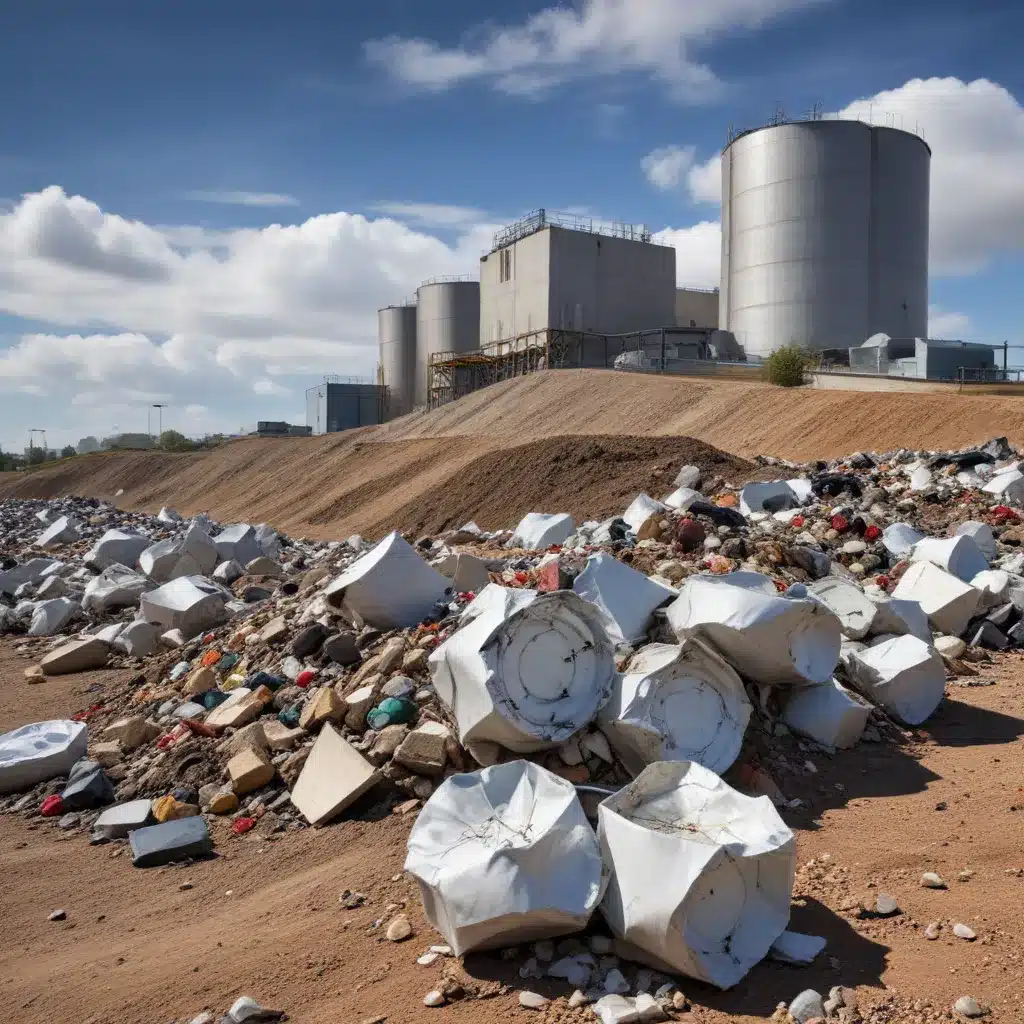
Across Europe, the energy transition is gaining momentum as governments and industries embrace renewable energy sources to meet ambitious net-zero goals. While large-scale wind and solar projects have been the primary focus, a rising tide of decentralized energy solutions is transforming the way we manage and repurpose our waste. Chief among these innovations is the burgeoning field of waste-to-energy (WTE) conversion, which is poised to play a pivotal role in Europe’s clean energy future.
Waste-to-Energy Conversion Fundamentals
WTE conversion technologies harness the energy potential of municipal solid waste, agricultural byproducts, and other organic materials through processes like anaerobic digestion, incineration, gasification, and pyrolysis. These methods can generate various forms of renewable energy, including biogas, electricity, and biofuels, while simultaneously reducing the volume of waste destined for landfills.
The advantages of WTE conversion are manifold. By diverting organic waste from landfills, these systems can prevent the release of methane, a potent greenhouse gas, into the atmosphere. Moreover, the energy produced through WTE can offset the need for fossil fuels, further reducing the carbon footprint of waste management. Importantly, WTE conversion also aligns with the principles of a circular economy, where waste is viewed as a valuable resource rather than a liability.
Despite these promising benefits, the widespread adoption of WTE conversion faces several challenges. Ensuring the efficient and environmentally responsible operation of these facilities is crucial, as some outdated incineration plants can release harmful pollutants. Additionally, the economic viability of WTE projects can be influenced by factors such as the cost of waste collection, transport, and pre-treatment, as well as fluctuations in energy prices.
Environmental Impact of Waste-to-Energy Conversion
The environmental impact of WTE conversion is a key consideration in Europe’s pursuit of sustainable energy solutions. By diverting organic waste from landfills, these systems can significantly reduce greenhouse gas emissions and mitigate the risk of soil and water pollution.
Greenhouse Gas Emissions Reduction: WTE conversion, particularly through anaerobic digestion, can capture methane that would otherwise be released into the atmosphere from decomposing waste in landfills. This methane can then be utilized as a renewable energy source, effectively displacing the need for fossil fuels and contributing to Europe’s decarbonization efforts.
Waste Management Improvements: WTE conversion can help alleviate the burden on landfills, which are often associated with environmental degradation and the disruption of natural landscapes. By converting waste into valuable energy, these systems reduce the volume of material destined for landfill disposal, thereby extending the lifespan of existing facilities and minimizing the need for new ones.
Circular Economy Opportunities: The integration of WTE conversion into waste management strategies aligns with the principles of a circular economy, where waste is repurposed as a resource. This approach promotes the efficient utilization of materials, the recovery of valuable components, and the minimization of waste, paving the way for a more sustainable future.
Economic Feasibility of Waste-to-Energy Conversion
The economic feasibility of WTE conversion projects is a critical factor in their widespread adoption. Careful cost-benefit analysis and the exploration of innovative financing models are essential to ensuring the long-term viability of these initiatives.
Cost-Benefit Analysis: WTE conversion can involve significant upfront capital investments, which must be weighed against the potential savings and revenue streams generated by the energy produced. Factors such as waste collection costs, transportation logistics, and the efficiency of the conversion process can all impact the economic viability of these projects.
Funding and Investment Opportunities: To overcome the financial hurdles, policymakers and industry leaders are exploring a range of funding mechanisms, including public-private partnerships, green bonds, and carbon offset programs. These innovative approaches can help mobilize the necessary resources to deploy WTE conversion technologies at scale.
Business Models and Revenue Streams: Successful WTE conversion projects often rely on diverse revenue streams, such as the sale of electricity, heat, or biofuels, as well as the potential for the sale of carbon credits or the monetization of recovered materials. Developing robust business models that leverage these revenue streams can enhance the economic attractiveness of WTE conversion.
Regulatory and Policy Frameworks
The growth of WTE conversion in Europe is shaped by a complex web of regulatory and policy frameworks, which can either facilitate or hinder the adoption of these technologies.
Waste Management Regulations: European Union directives, such as the Waste Framework Directive and the Landfill Directive, have established targets for the diversion of waste from landfills and the promotion of waste recovery and recycling. These policies create a supportive environment for the deployment of WTE conversion technologies.
Renewable Energy Policies: Alongside waste management regulations, Europe’s ambitious renewable energy targets, as outlined in initiatives like the Renewable Energy Directive, provide incentives and support for the integration of WTE conversion into the energy mix.
Incentives and Subsidies: To further drive the adoption of WTE conversion, policymakers have implemented a range of financial incentives, including feed-in tariffs, production tax credits, and investment tax credits. These programs can help bridge the gap between the upfront costs and the long-term benefits of WTE conversion.
As Europe continues to navigate the energy transition, the decentralized approach of WTE conversion offers a promising pathway to achieving sustainability, enhancing waste management, and generating renewable energy. By leveraging innovative technologies, favorable regulatory frameworks, and creative financing models, the region can unlock the full potential of waste-to-energy conversion to power a greener future. To discover more about these advancements, I encourage you to visit the European Future Energy Forum and explore the latest developments in the field.







